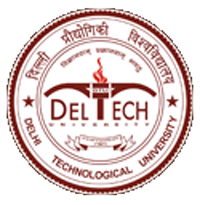Please use this identifier to cite or link to this item:
http://dspace.dtu.ac.in:8080/jspui/handle/repository/21602| Title: | ROLE OF MOOCs IN ADDRESSING CRUCIAL KNOWLEDGE, SKILL AND EMPLOYABILITY GAPS: A STUDY OF ONLINE EDUCATION IN INDIA |
| Authors: | PAWAR, HIMANSHU |
| Keywords: | MOOCs SWAYAM EMPLOYABILITY GAPS ONLINE EDUCATION IN INDIA |
| Issue Date: | Jun-2025 |
| Series/Report no.: | TD-7855; |
| Abstract: | Online learning after COVID-19 picked up a pace in higher education like never before. Even though online learning systems have been present in the Indian education sector since the early 2000s, they have, however been considered as a supplementary method of teaching and learning. Over the years, self-directed learning via means of recorded lectures in IITs and IIMs (i.e., at the top of the Indian engineering and management institutions) has been isolated mainly for a cohort of highly successful students at the undergraduate level. The lack of resources at most Indian higher education institutions has hindered the growth of self-directed learning. Academic lectures on open platforms such as YouTube have been present for a long time but were not popular among most of the student population in India. Students and universities preferred the traditional mode of teaching and learning, i.e., face-to-face instruction, over any other medium of instruction. It was not until the coining of the term Massive Open Online Courses (MOOCs) in 2008 by Dave Cormier in Canada that the attention to online learning courses took a global flight. Once the potential was discussed and harnessed by top academic institutions across the globe, privately funded and government e-learning platforms began to multiply, leading to a global revolution in online learning methods. The first Indian e-learning platform funded by the government of India was launched in 2017 and was given the acronym Study Webs of Active Learning for Young Aspiring Minds (SWAYAM). During and after COVID-19, e-learning became the norm for teaching and learning across hybrid-functioning universities and institutions. MOOCs began to be widely used for credit at universities, and the New Education Policy, 2020 also vouched for MOOCs to be a formal part of the education system in India. Our study explores the role of MOOCs in helping students upskill themselves, which might help bridge the mismatch between academia and industry expectations. We believe in the more positive aspects of MOOCs and vouch for their effective integration in the form of supplementary aid to all higher education institutions lacking in delivering quality education, industry-relevant skills and knowledge. Keeping in mind that the students are the primary stakeholders of education, the current study focuses solely on students' perceptions of the curriculum development process at universities. viii The importance of their role is examined since the effects of any form of policy implementation that affects students directly must be seriously considered by the universities. Our study also focuses on critical student issues with MOOCs that affect the more significant problems in the e-learning systems, such as high student drop-out rates, lack of motivation, etc. A combined understanding of such issues helps to evaluate the problems from a systems perspective. More profound interconnections between issues and their behaviour is evaluated in this current study. Since MOOCs for credit are mandated among higher education institutions in their curriculum, it is equally important to gauge the effectiveness of such policy implementation. Our study explores this objective via in-depth interviews with students who have presented their accounts of the university mechanism for credit and helped uncover the system's loopholes. The results of our study indicate that students are using MOOCs to upskill themselves and keep up with the latest trends in the market. The issues with MOOCs are still persistent and need more attention to detail in the larger e-learning context. The policy directives from the government fail at multiple points, and students have found to outsmart the system view means of cheating and using immoral means of securing credits. The popularity of the government funded e-learning platform SWAYAM is on a downward spiral. There is immense potential, but the platform cannot keep up with advancements in features for e-learning platforms when compared globally. Further contributions and the limitations and scope for future work are also discussed towards the end of the work. |
| URI: | http://dspace.dtu.ac.in:8080/jspui/handle/repository/21602 |
| Appears in Collections: | Ph.D. |
Files in This Item:
| File | Description | Size | Format | |
|---|---|---|---|---|
| Himanshu Pawar Ph.D..pdf | 3.87 MB | Adobe PDF | View/Open |
Items in DSpace are protected by copyright, with all rights reserved, unless otherwise indicated.



